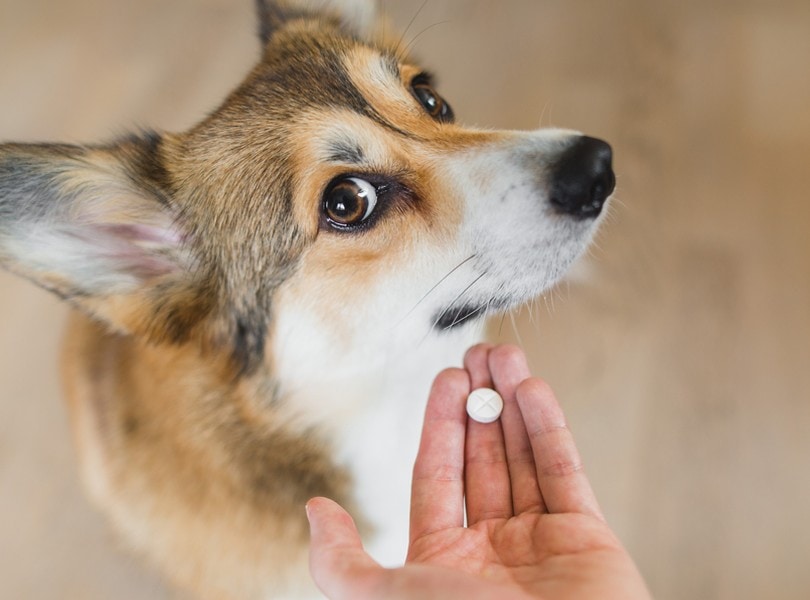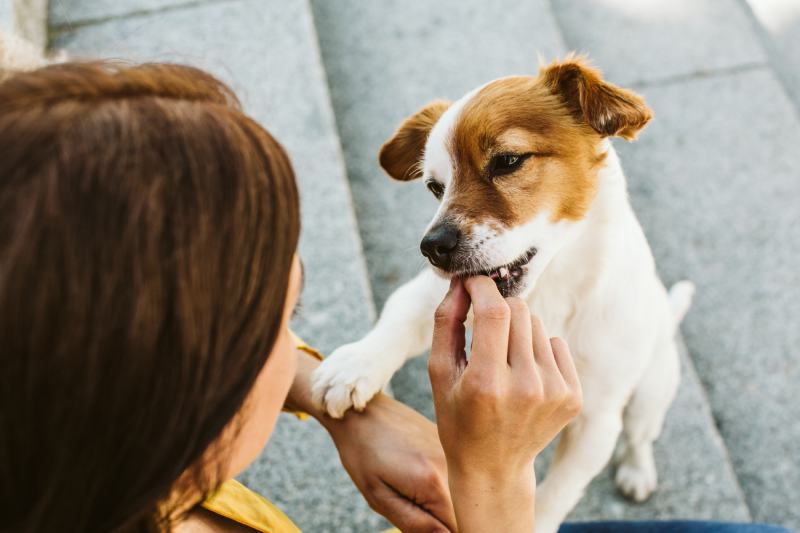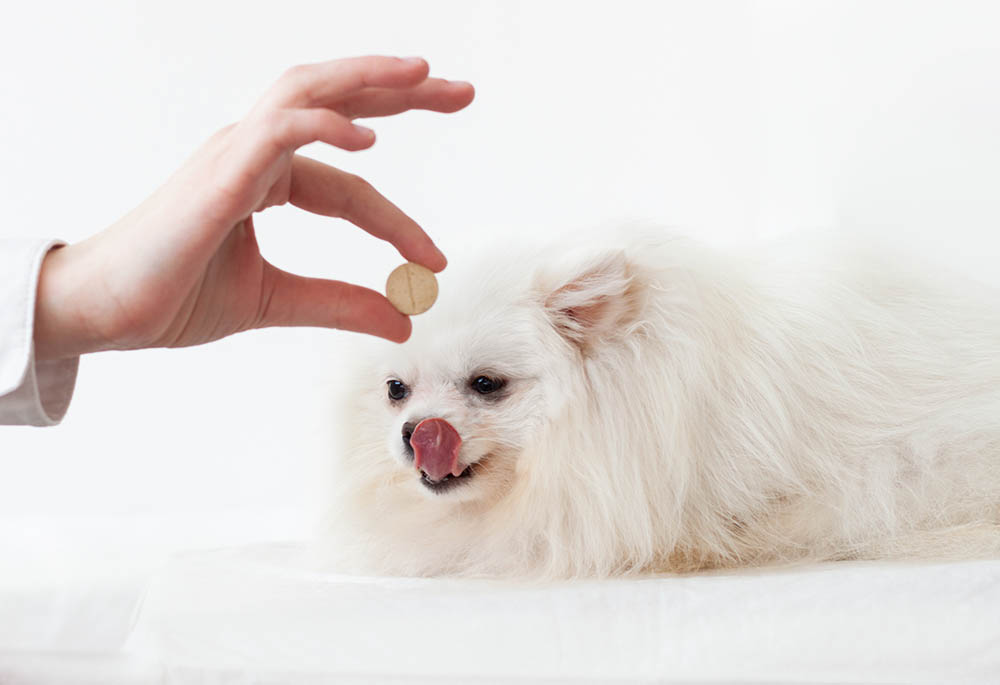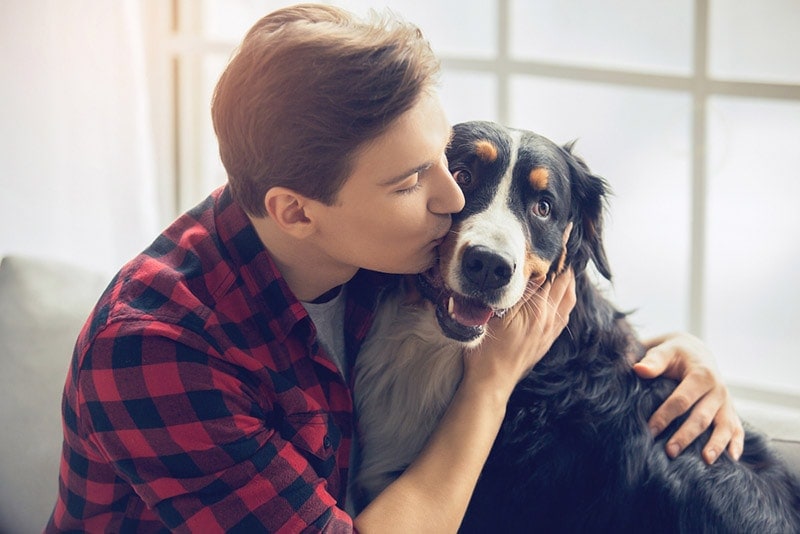
Unless you are an extremely fortunate dog owner, the chances are your pup will need to take medication at some point in their life. When that happens, your dog must take the full course prescribed by your vet for the best results. However, this is often easier said than done. The simplest way to get a dog to take a pill is to hide it in food, but what if that’s not an option? Here are six great options for how to give a dog a pill without food, along with some tips to make the process go more smoothly.
The 6 Ways To Give a Dog a Pill Without Food
1. Ask if the Pill Comes in a Chewable Form
If you can’t hide your dog’s pill in food or a treat, one option is to see if the pill comes in a “treat” form. Ask your veterinarian if the compound is available as a flavored chewable tablet. If so, your dog will hopefully learn to think of their pill as a treat and gobble it right up. If the pill isn’t available as a chewable, ask whether it can be compounded or prepared into one at a special pharmacy. You can expect to pay extra for this preparation if it is available.

2. Put the Pill in a Gel Capsule
If you can’t get a better-tasting pill, another option is to disguise the taste by placing it inside an empty gel capsule. These can typically be purchased at a pharmacy in various sizes. Many pills taste bitter, and sometimes hiding them with a tasteless gel cap will do the trick. You can ask your vet if it’s okay to coat the gel capsule in gravy from canned food or something else tasty to help entice your pup to eat it.
3. Dissolve the Pill in Water
Another option to consider is dissolving the pill in water to make it a liquid preparation. However, you’ll need to double-check with your vet before attempting this method to ensure it won’t make the medication less effective. Once they give the okay, place the pill in a bowl and add just enough water to dissolve it. You may need to use a spoon to crush the medication and speed up the process. Once fully dissolved, use a medication syringe to suck up the liquid and squirt it into your dog’s mouth as far back as possible. Hold your pup’s mouth closed and stroke their throat to encourage them to swallow. You may want to follow with a syringe of clean water to help rinse your dog’s mouth.

4. Use a Pill Popper
If your pet doesn’t respond to the previous methods, you can try using a pill popper. This device functions like a mini-catapult, allowing you to place the pill far back in your dog’s mouth with less effort. To use it, place the pill on the end of the popper and encourage your dog to open its mouth by placing one hand over the muzzle and pressing on both sides, just behind the upper canine teeth. Once they open their mouth enough for the pill popper to fit, slide the movable center portion of the popper backward, insert the tip into your dog’s mouth and depress the popper. The pill will shoot out into the back of your dog’s mouth. You can then hold your dog’s mouth closed and stroke their throat as previously described until swallowing occurs.
5. Give the Pill by Hand
If all else fails, you may need to resort to pilling your dog by hand. The difficulty of this task depends very much on how cooperative your dog decides to be. Start by sitting your dog in your lap or having them sit with their back to you if you have a large pup. Hold the tablet in your dominant hand and open the dog’s mouth, then tip your dog’s head up as you do so, which typically causes their lower jaw to drop open, allowing you to place the pill in their mouth. Try to position it behind the bump in the middle of your pup’s tongue, far enough back that it can’t be spit out easily. Hold the mouth closed, stroke the throat, and blow gently into your dog’s nose until they swallow. If your dog is extra wiggly, you may need to enlist an assistant to help hold them still.

6. Ask for Professional Help
If you’re truly struggling to give your dog a pill without food, you can ask for professional help. Veterinarians often have staff who moonlight as pet sitters that you can hire to come and administer medications. Some professional pet sitting companies also offer medication visits. You can ask your vet’s staff for a lesson on how to serve a pill or use a pill popper. As a last resort, you could ask if your vet offers appointments with a vet tech to give medications. These options will cost more money but may be worth it if you’re having a hard time getting your dog to take medications.
General Tips for Giving Your Dog a Pill Without Food
No matter which method you use to give your dog’s pill, a few basic tips can simplify the process.
Take your pet into a quiet room and maintain a relaxed demeanor. Speak calmly to your dog and move slowly to keep them from becoming anxious. If you need an assistant to help you, make sure it’s someone your dog is familiar with.
Be generous with praise and rewards during the entire pilling process. If the pills must be given on an empty stomach, reward your dog with plenty of attention, petting, and playtime. Following up the pill with a squirt of water from a syringe or eye dropper can help encourage your dog to swallow and rinse any bitter taste out of their mouth.
Dogs are good at sensing any uncertainty in their humans and taking advantage of it. Even if you don’t feel confident in what you’re doing, try not to show it!

Final Thoughts
If none of our six options for giving your dog a pill without food seems to be working for you, don’t despair. Be honest with your veterinarian about your struggles and ask what else you can do. Medications may be available as liquids or injections, but you won’t know if you don’t ask. Don’t stress yourself or your dog out by struggling through a course of medication, especially if you aren’t sure you can safely get pills into them due to their temperament.
Featured Image Credit: Jus_Ol, Shutterstock







